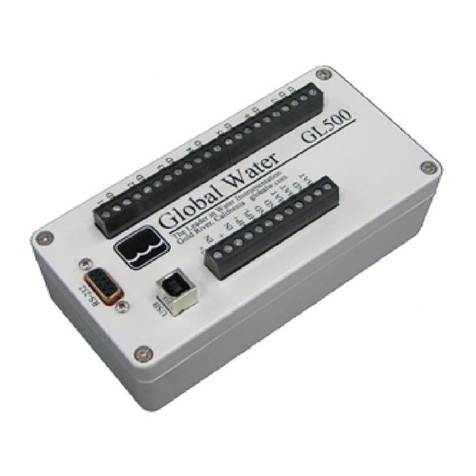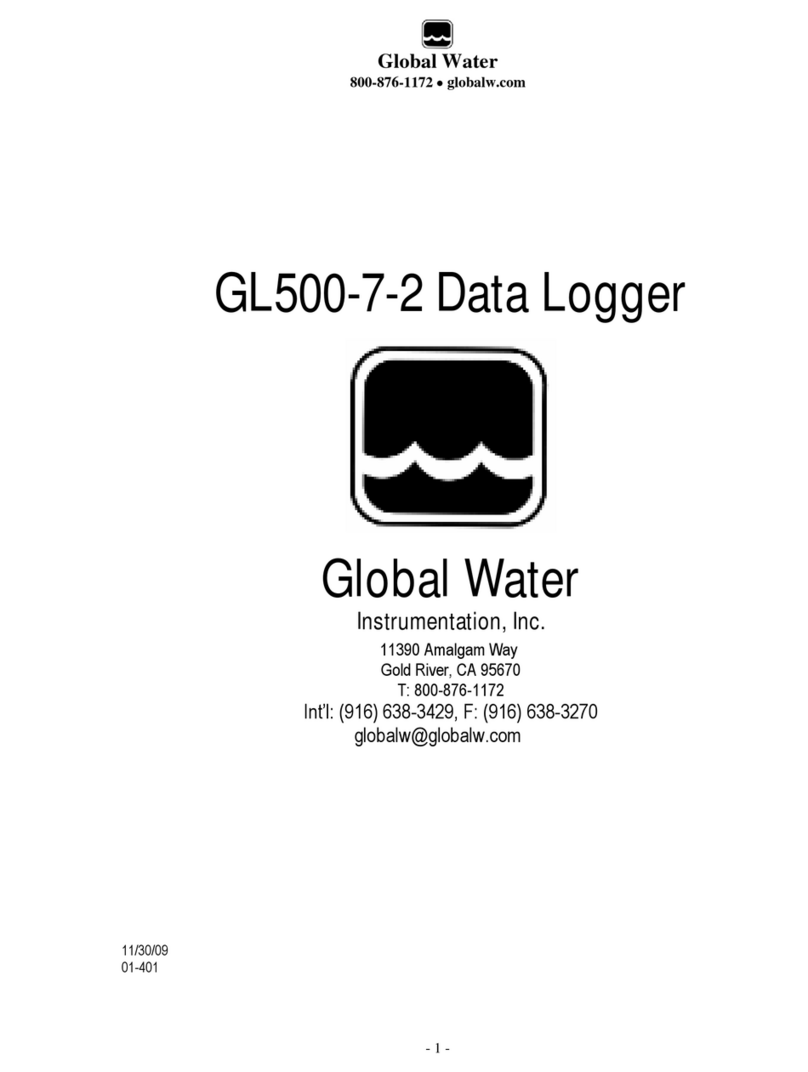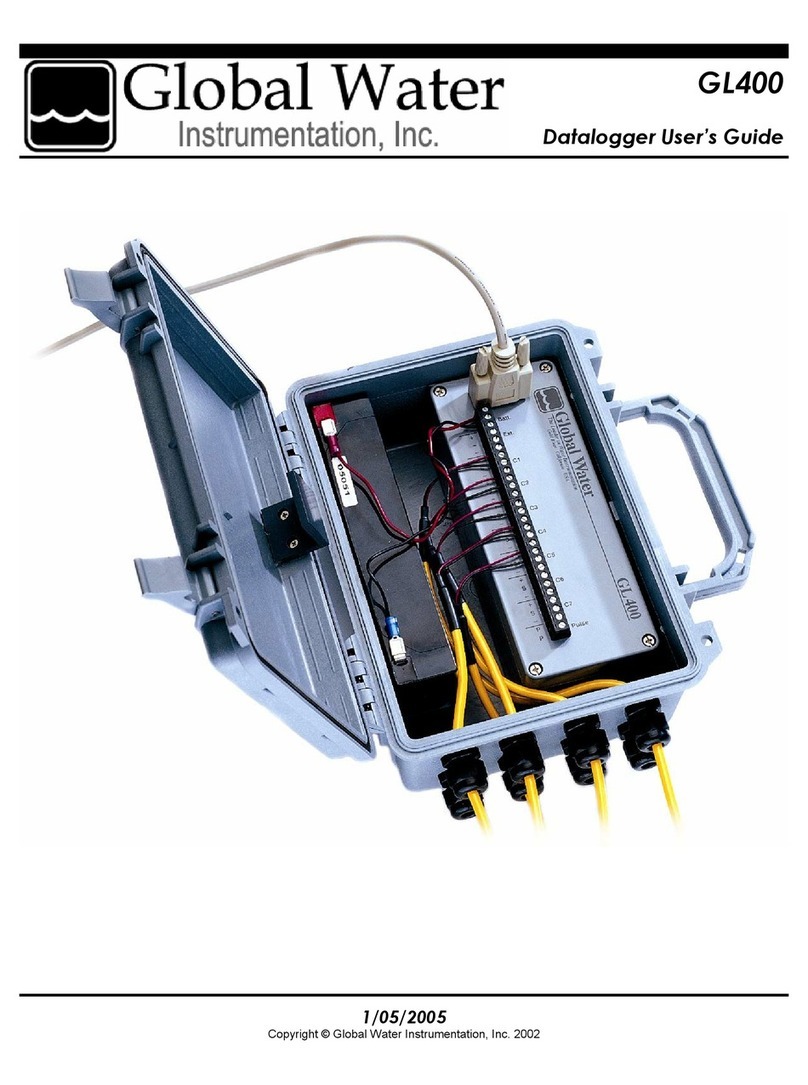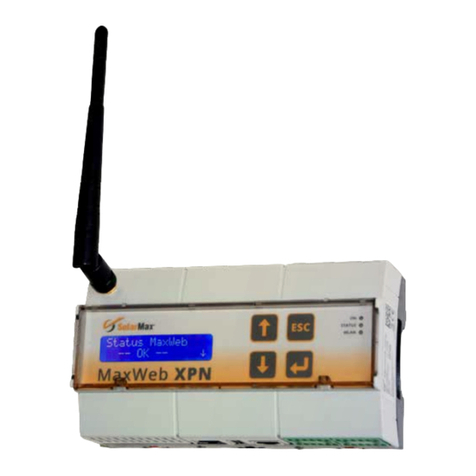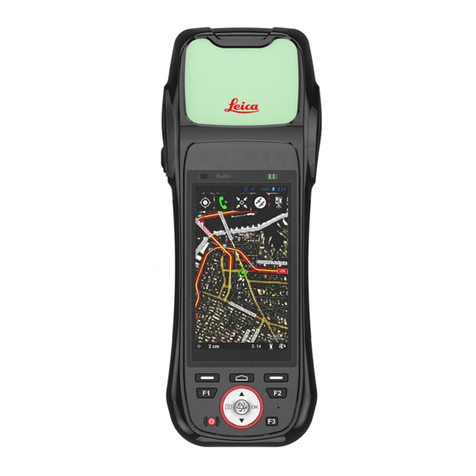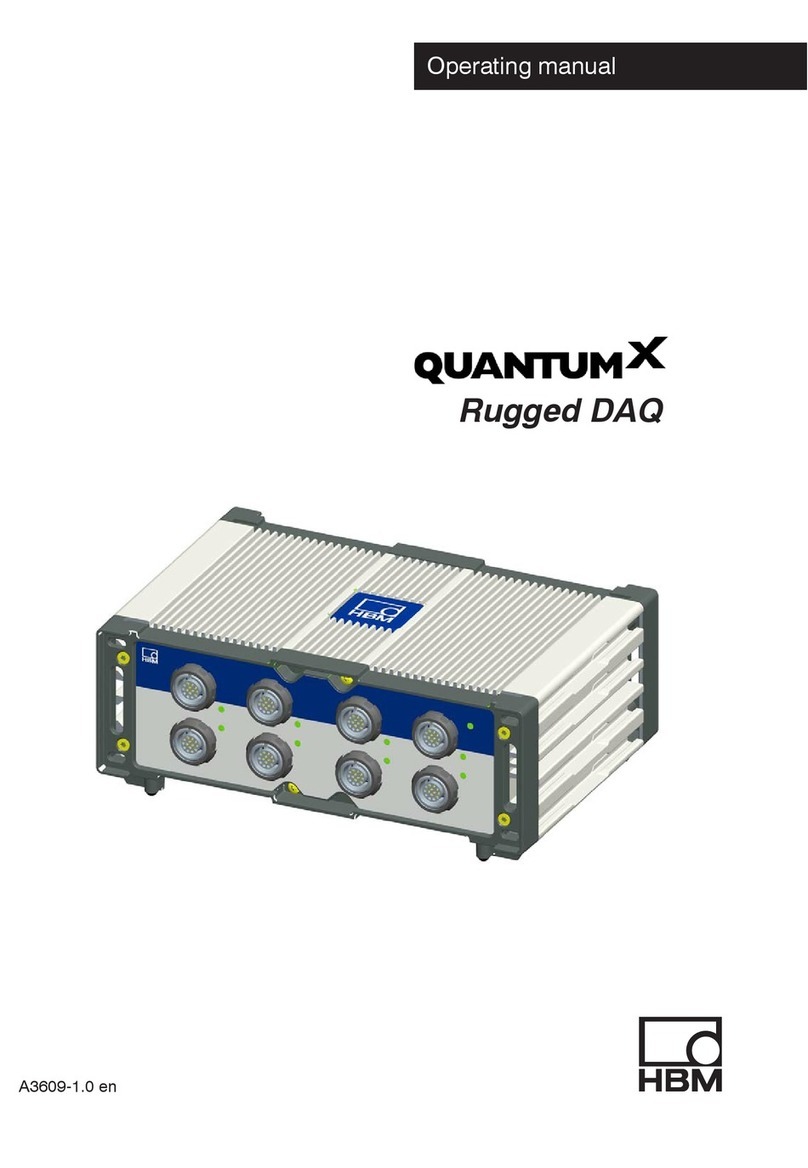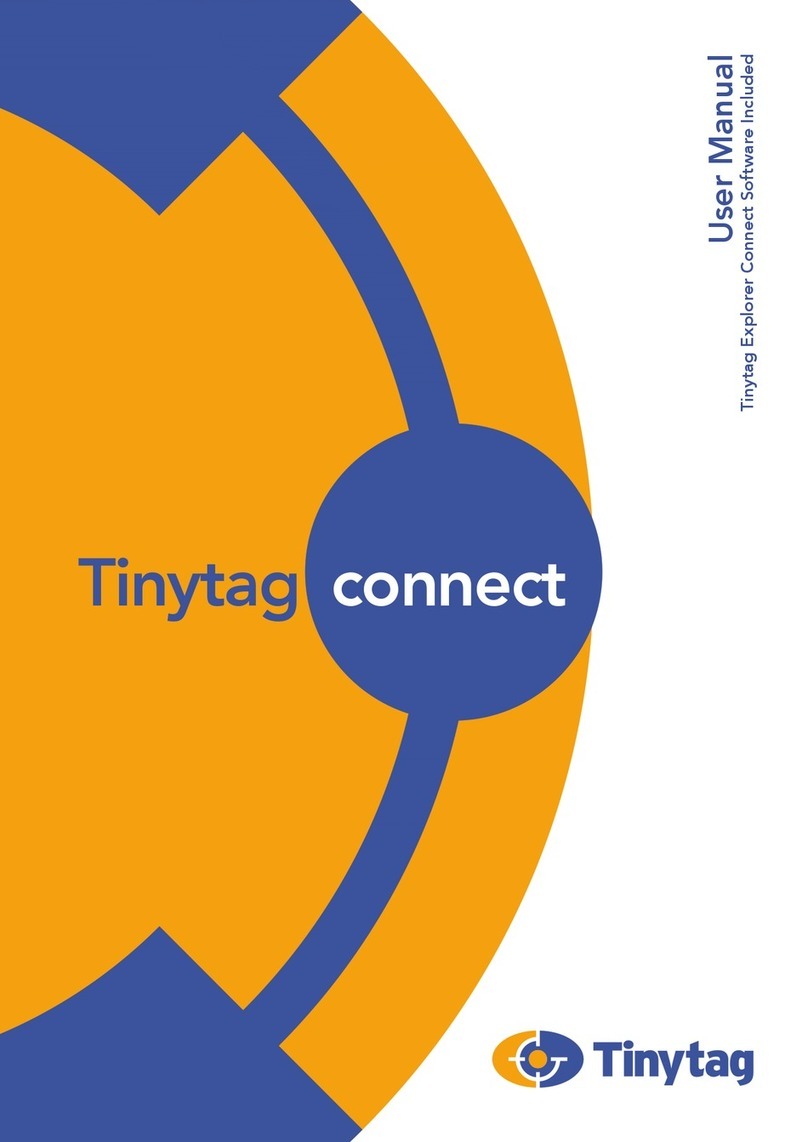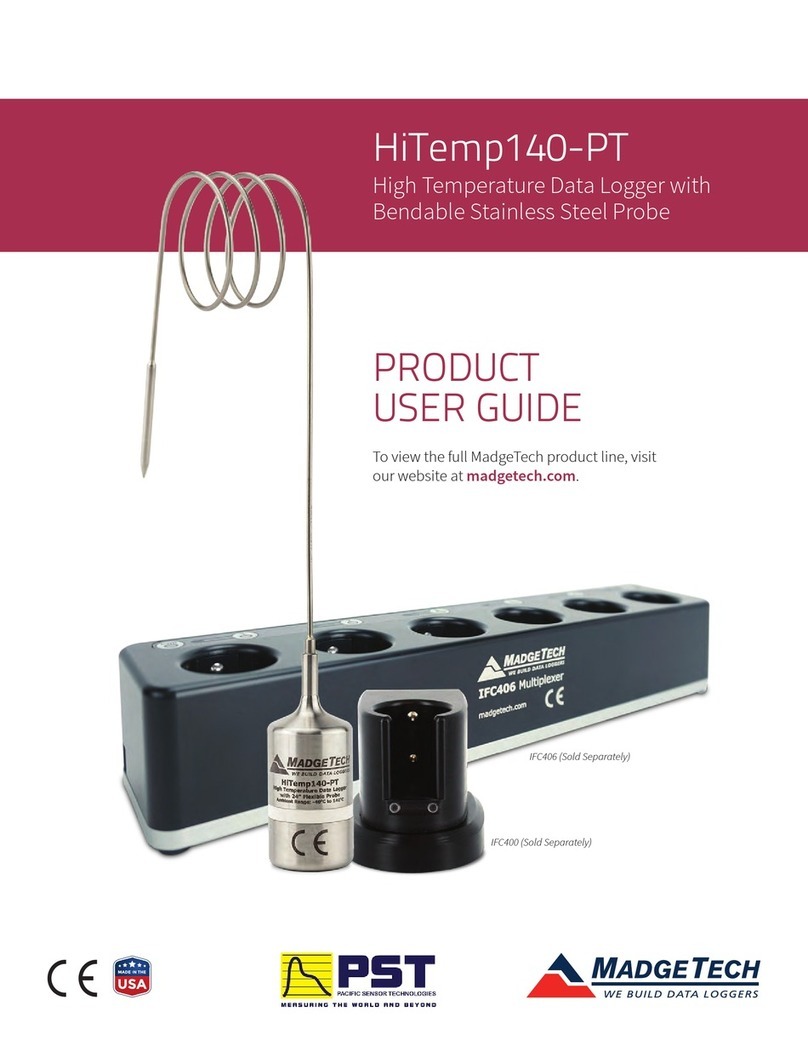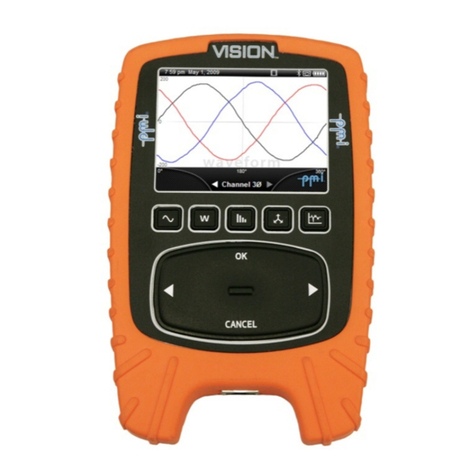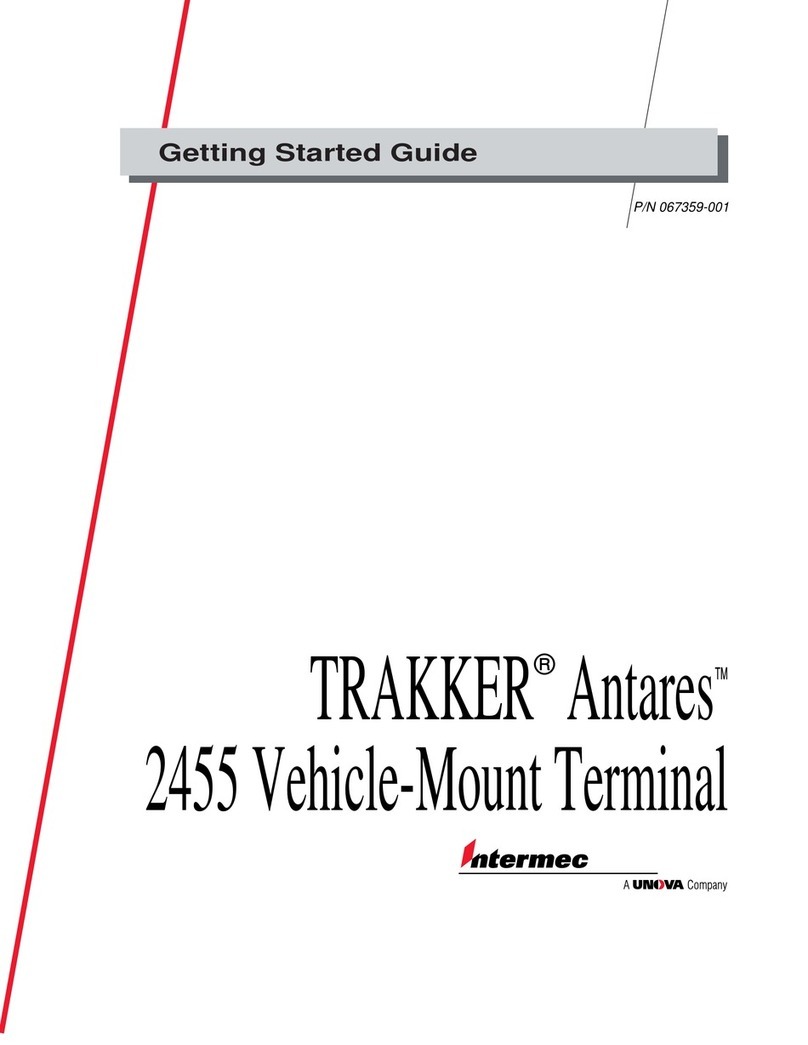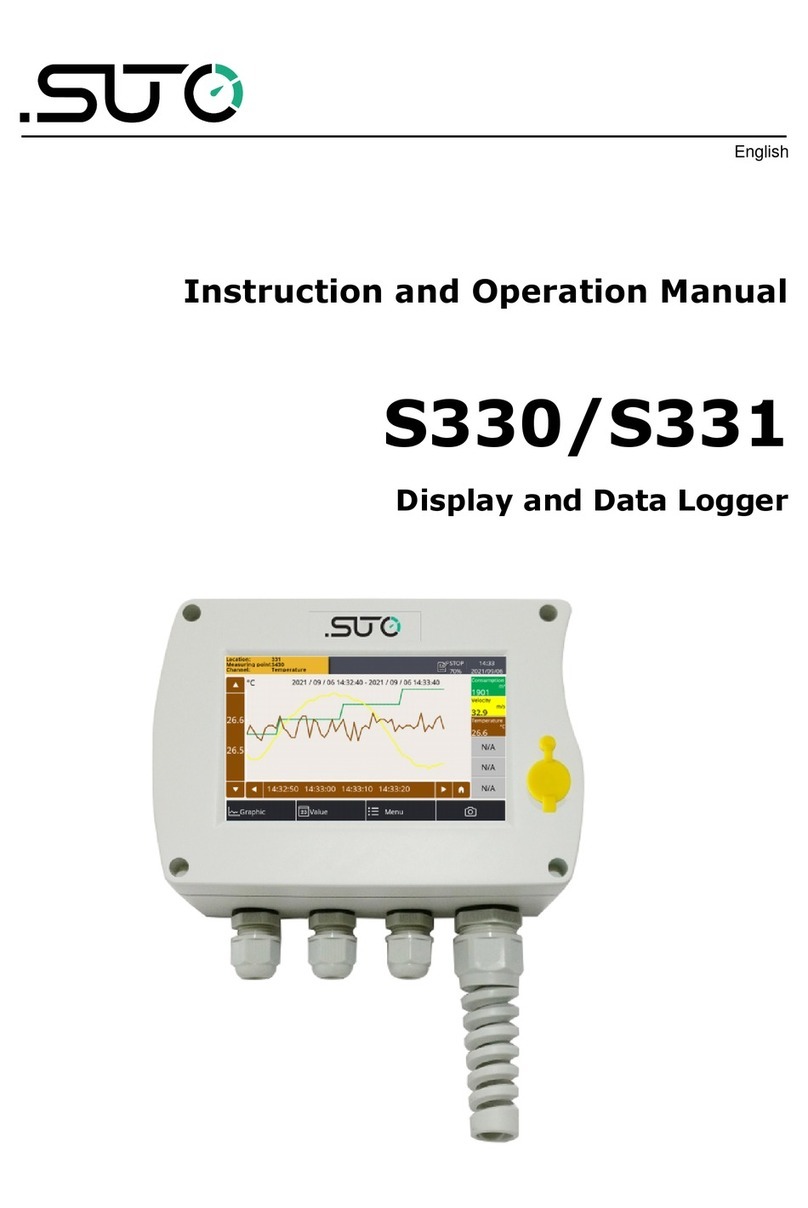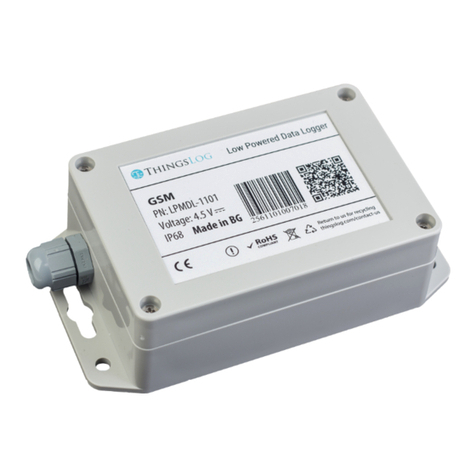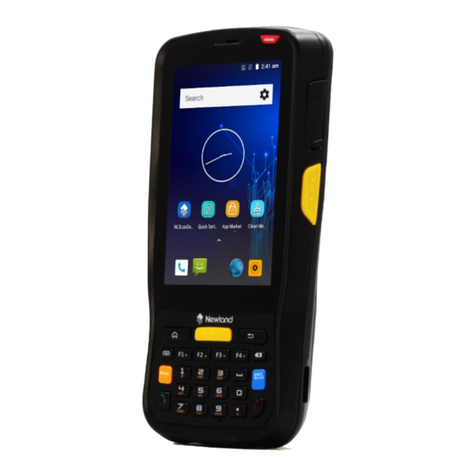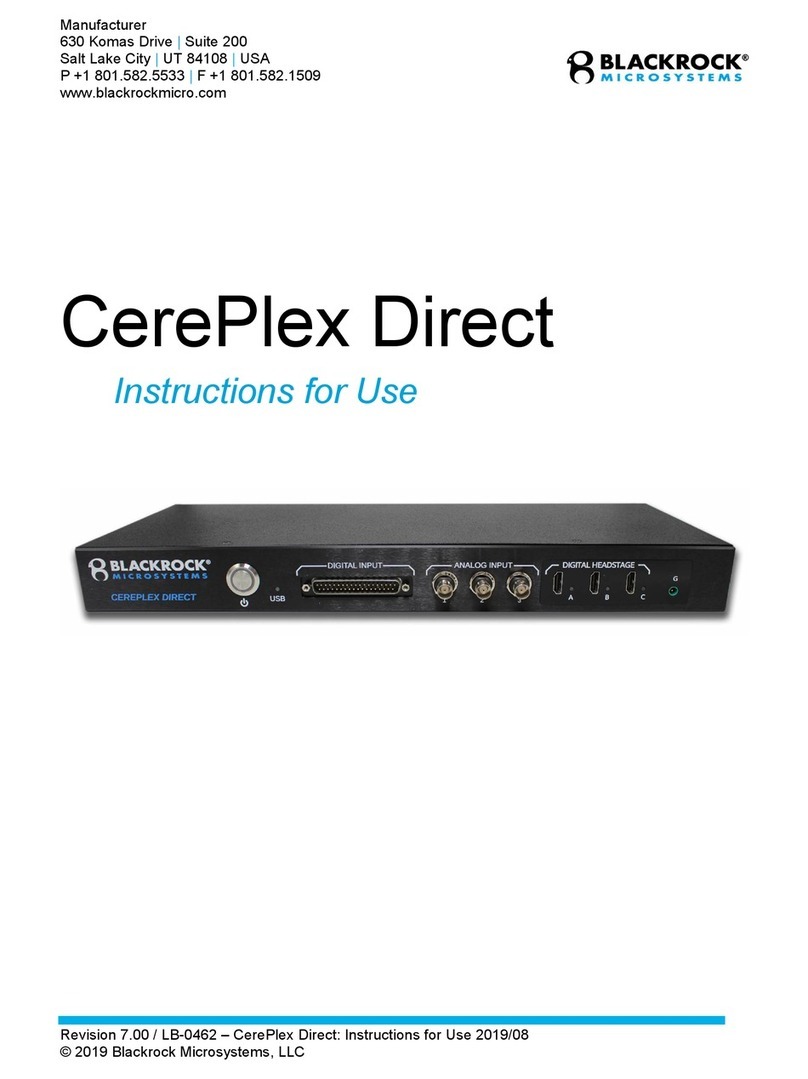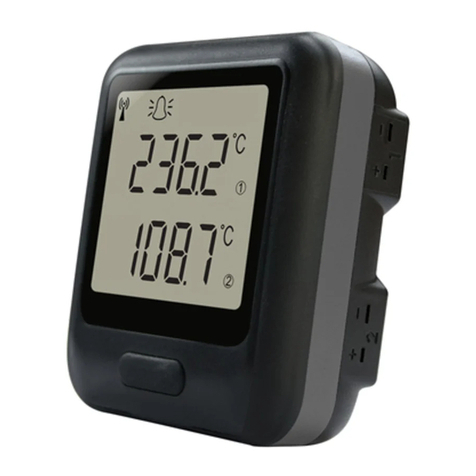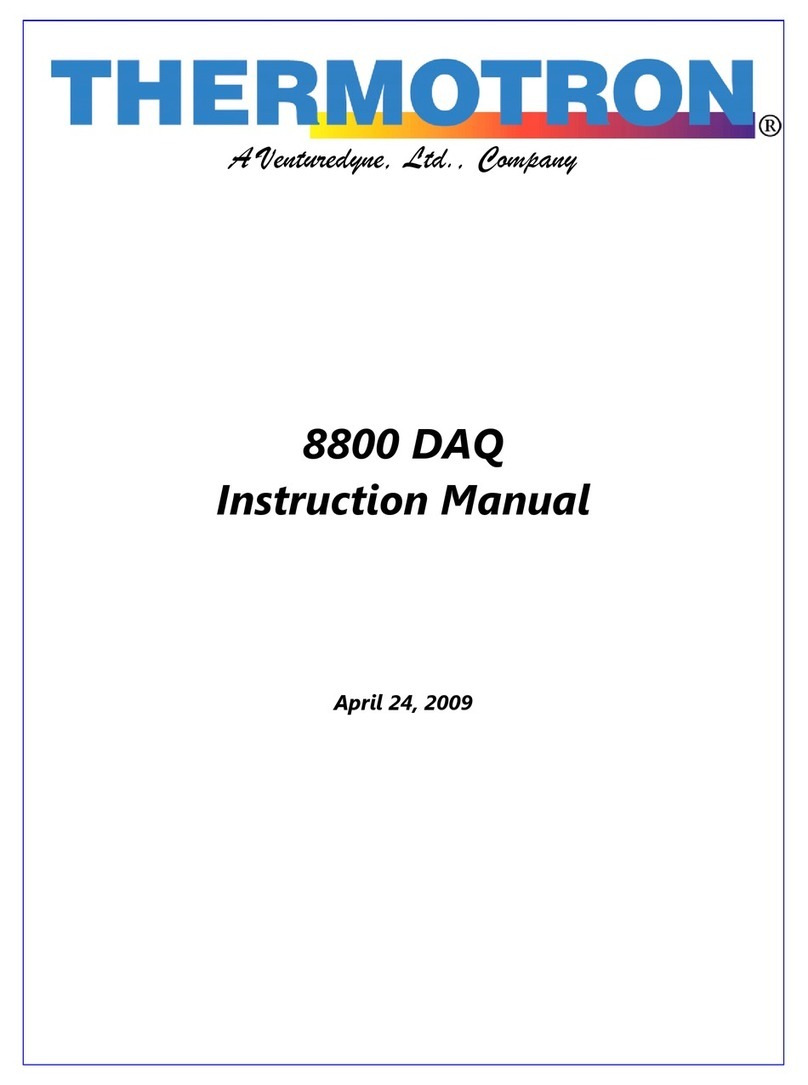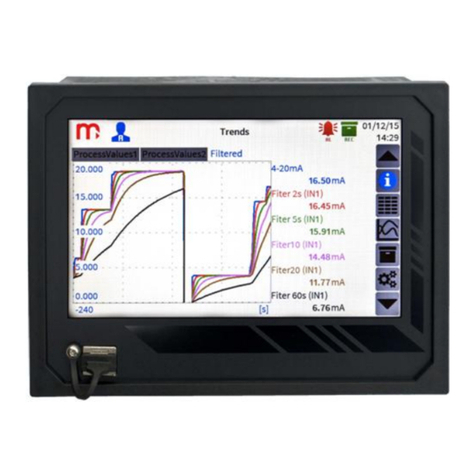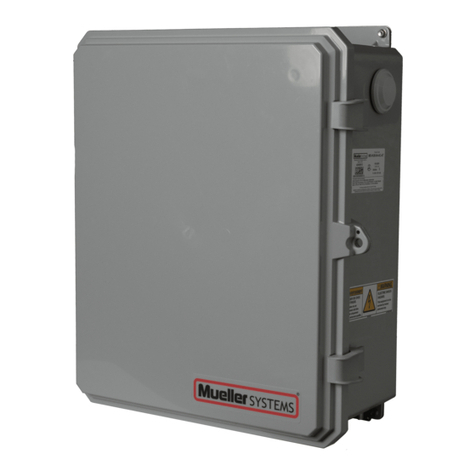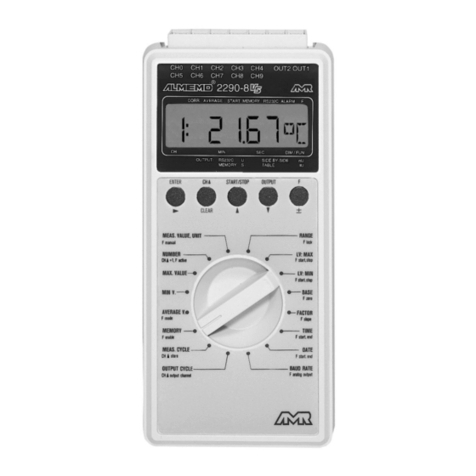globalwater WL15 User manual

Page 1
Global Water ●(800)876-1172 ●www.globalw.com
6/5/2002
Copyright © Global Water Instrumentation, Inc. 2002
WL15
Water Level Logger User’s Guide

Page 2 Global Water ●(800)876-1172 ●www.globalw.com
Requirements
•Windows 95, 98, ME, NT, 2000 or XP*
•486DX 66MHz, 16MB RAM (Windows 95 base machine; later operating systems may require
higher specifications)
•Available COM port
*Windows® 95, 98, ME, NT, 2000 & XP are trademarks of the Microsoft Corporation
Terminology
In order to better understand this product manual, please be aware of the following terminology
and formatting usage.
Bolded terms (i.e. bold) indicate either a keyboard key, a word or icon that appears on your com-
puter monitor screen or a phrase to be emphasized. Context will dictate which is indicated.
Since it is assumed that users of this manual are familiar with mouse usage, many mouse opera-
tions are implied. The term “click” or “clicking” means to press and release the left mouse button.
Similarly, “double-click” means to press and release the left mouse button twice in quick succes-
sion. For example, the phrase “Click the start button” should be interpreted as “Move the mouse
pointer to the task bar and click the start button.” If any other mouse button is used in an opera-
tion, it will be specified in the documentation.
The term “select” means to move the mouse pointer over the indicated target. For example the
phrase “Select Toolbars from the View menu” means to move the mouse pointer over Toolbars
after the View menu has been displayed. “Select” is normally used when the mouseover action
will cause additional menus to display.
The →symbol is used with submenu operations where the user should click the first and last
items in the string separated by →. For example, the phrase “Click on File →New →Folder”
means click on File, select New and click on Folder.
When the documentation directs you to exit a program or window, you can generally do so by
clicking the xgraphic in the upper right-hand corner or by clicking File →Exit.
x graphic
Contact Information
Global Water Instrumentation, Inc.
11257 Coloma Road
Gold River, CA 95670
Toll Free: 1(800)876-1172
Local: 1(916)638-3429
Fax: 1(916)638-3270
E-mail: [email protected]
Web: www.globalw.com

Page 3
Global Water ●(800)876-1172 ●www.globalw.com
CHAPTER 1: INTRODUCTION .............................................................................. 5
THE WL15 WATER LEVEL LOGGER .............................................................................................. 5
FEATURES.................................................................................................................................... 5
CHECKLIST................................................................................................................................... 6
GETTING TO KNOW THE WL15 ..................................................................................................... 7
CHAPTER 2: SETUP .............................................................................................. 9
INSTALLING THE WL15................................................................................................................. 9
SYSTEM TIME CHECK ................................................................................................................... 9
GLOBAL LOGGER SOFTWARE INSTALLATION ............................................................................... 10
HARDWARE INSTALLATION.......................................................................................................... 14
General Installation Tips........................................................................................................ 14
Groundwater Installation........................................................................................................ 15
Surface Water Installation...................................................................................................... 15
Special Installations............................................................................................................... 16
STORING THE WL15................................................................................................................... 16
CHAPTER 3: USING GLOBAL LOGGER SOFTWARE ...................................... 17
HARDWARE CONNECTION ........................................................................................................... 17
GLOBAL LOGGER STARTUP ........................................................................................................ 17
GLOBAL LOGGER FUNCTIONS ..................................................................................................... 19
Sample Continuously/Real-Time Values ............................................................................... 19
Get Settings........................................................................................................................... 19
Get History Data .................................................................................................................... 19
Clear Memory ........................................................................................................................ 21
Synchronize Time.................................................................................................................. 22
Setup ..................................................................................................................................... 22
Datalogger Name and Sensor Warmup Time..................................................................................................23
Calibration........................................................................................................................................................24
Recording Interval and Memory Management .................................................................................................26
CHAPTER 4: MAINTENANCE ............................................................................. 29
BATTERY.................................................................................................................................... 29
CALIBRATION ............................................................................................................................. 30
SENSOR SCREEN SCREENING ..................................................................................................... 30
CHAPTER 5: TROUBLESHOOTING ................................................................... 31
COMM FAILURE .......................................................................................................................... 31
SENSOR READING INCORRECTLY ................................................................................................ 32
WATER IN THE VENT TUBE ......................................................................................................... 32
OTHER ISSUES ........................................................................................................................... 32
CHAPTER 6: WARRANTY ................................................................................... 34
APPENDIX A: WL15 DETAILED SPECIFICATIONS ........................................... 35
DATALOGGER............................................................................................................................. 35
SENSING ELEMENT ..................................................................................................................... 36
HOUSING.................................................................................................................................... 36
CABLE ....................................................................................................................................... 36
APPENDIX B: WORKSHEETS............................................................................. 37
CALIBRATING THE BAR GRAPH TO HIGHER OR LOWER RANGE.................................................... 37
Table of Contents

Page 4 Global Water ●(800)876-1172 ●www.globalw.com
CALIBRATING LEVEL SENSORS FOR DEPTH TO WATER READINGS............................................... 38
APPENDIX C: CABLE CONFIGURATION ........................................................... 39
APPENDIX D: TERMINAL PROGRAMMING....................................................... 40
COMMUNICATION COMMANDS FOR WINDOWS DATALOGGER ........................................................ 40

Page 5
Global Water ●(800)876-1172 ●www.globalw.com
1
Introduction
The WL15 Water Level Logger
Congratulations on your purchase of the Global Water WL15 Water Level Logger. This instrument has
been quality tested and approved to provide accurate and reliable water level (water pressure) measure-
ments. We are confident you will find the WL15 to be a valuable asset for your applications. Should you
require assistance, our technical staff will be happy to help.
The WL15 provides a datalogger with a submersible pressure transducer for remote monitoring and re-
cording of water level, flow or pressure data. This highly reliable and accurate water logger records 24,400
readings and is programmable from one reading per second to one reading per day. Ranges of 0-3', 0-15', 0-
30', 0-60', 0-120' and 0-250' are available. A 25' cable is standard, and optional cable lengths are available
up to 1000'.
The WL15’s datalogger is housed in a weather-resistant cylindrical enclosure that slips inside a 2-inch pipe.
The logger is easily adapted with standard hardware for well head mounting or other installations. The
WL15 includes Windows-based software, allowing easy upload of data to standard spreadsheet programs
on a PC computer.
The WL15's level sensor electronics are fully encapsulated with marine-grade epoxy, providing superior
moisture protection over O-ring seals. During this process, the vent tube is sealed directly to the sensing
element, preventing any moisture from damaging the sensor’s electronic components.
The level sensor uses a unique silicon diaphragm to interface between the water and the sensing element.
This silicon diaphragm is highly flexible and touches the sensing element, producing a sensor with excep-
tional linearity and very low hysteresis. The pressure transducer utilizes a stainless steel micro-screen cap to
protect the sensing element. This protective cap has hundreds of openings, making fouling the sensor with
silt, mud or sludge virtually impossible.
Features
Data
•Windows based Global Logger* software
•Tabular display/printout
•Data in standard spreadsheet format
•Communication cable included (RS232C)
Logger
•Weather resistant enclosure
•Fits inside 2” pipe
•Records 24,400 readings
•12 bit or 1/4,000 resolution
•Battery powered
Cable
•Marine grade, heavy urethane jacket
•Barometric pressure vent
•Lengths up to 1000’
Sensor
•Fully encapsulated submersible pressure trans-
ducer
•Amplified and temperature compensated
•High accuracy
•3/4” diameter wet-wet transducer (no vent mois-
ture problems)
*Copyright © Global Water Instrumentation, Inc. 2001
Introduction

Page 6 Global Water ●(800)876-1172 ●www.globalw.com
Checklist
Your WL15 was carefully inspected and certified by our Quality Assurance Team before shipping. If any
damage has occurred during shipping, please notify Global Water Instrumentation, Inc. and file a claim
with the carrier involved. Use the checklist to ensure that you have received everything needed to operate
the WL15. Your sensor has been inscribed with the sensor range for easy identification.
*Copyright © Global Water Instrumentation, Inc. 2001
•WL15 (Datalogger, Level Sensor and Cable)
•User Manual
•Communication Cable (RS232C COM Cable)
•Global Logger Software (3 1/2” Floppy Diskette)
Communication Cable Global Logger Software*
User Manual
Datalogger
Level Sensor
Cable
Chapter 1

Page 7
Global Water ●(800)876-1172 ●www.globalw.com
Getting to Know the WL15
The COM port can connect to a PC serial port using
the included Communication Cable.
COM port
Unscrew logger cap to access lithium bat-
tery.
lithium battery
The Communication Cable has two
different connectors. Connect the
DB-9 female connector to your PC
and the 4-pin mini socket* to your
Datalogger.
DB-9 female connector 4-pin mini socket
*See Appendix C: Cable Configuration, page 39
Introduction

Page 8 Global Water ●(800)876-1172 ●www.globalw.com
The water level sensor is located inside the
sensor housing, near the mesh screen.
sensor location
Chapter 1

Page 9
Global Water ●(800)876-1172 ●www.globalw.com
2
Setup
Installing the WL15
Setup
To verify your system time in Windows, click Start →Set-
tings →Control Panel from the task bar.
Double-click the Date/Time icon.
Before you install the software, check the accuracy of the time and date on your computer. The WL15 will
be programmed with this information.
System Time Check

Page 10 Global Water ●(800)876-1172 ●www.globalw.com
Chapter 2
Verify that your system is set to the cor-
rect time. If not, make the necessary
changes and click the Apply button fol-
lowed by the OK button. Exit the control
panel.
Double-click the My Computer icon on your desktop.
Double-click the floppy icon (normally listed as 3 ½ floppy (A:)).
Insert the 3 1/2” floppy diskette labeled “Global Logger Software Version x.xx” (where x.xx is a version
number such as 1.36) into your computer’s floppy disk drive. Normally, the floppy will be the computer’s
“A” drive.
Global Logger Software Installation

Page 11
Global Water ●(800)876-1172 ●www.globalw.com
Click on the file Global Logger.exe.
Click Edit →Copy from the menu bar.
Setup

Page 12 Global Water ●(800)876-1172 ●www.globalw.com
If the directory Global Logger is not
listed, click File →New →Folder from
the menu bar.
The directory New Folder should now be created and automatically se-
lected for typeover. Type Global Logger and press the enter key.
Save the file to a directory of your choosing. Note, it should be a location you will easily remember. To
save to the directory Global Logger located on your main “C” hard drive (although “C” is normally the
main system drive, the designation can vary from system to system), start by clicking the down carrot of the
address field. Click on the Local Disk (C:) icon or appropriate main system drive designation.
down carrot
Chapter 2

Page 13
Global Water ●(800)876-1172 ●www.globalw.com
Double-click on the new
Global Logger directory.
Click Edit →Paste from the menu bar.
A Copying… dialog box should now display.
Wait for the copy process to complete.
Setup

Page 14 Global Water ●(800)876-1172 ●www.globalw.com
To create a desktop shortcut, right-click the Global Logger.exe file you previously saved, select Send To
and click on Desktop (create shortcut).
You can now access your Global Logger* software directly from the desktop.
Hardware Installation
General Installation Tips
•The WL15 has many applications and therefore many installation options. The WL15’s pressure sensor
is fully submersible and may be suspended by its waterproof cables in the water to be monitored.
•The data logger is not waterproof. It is water-resistant. This means that condensation, which can
build up inside the enclosure during humid conditions, should not affect the performance of the WL15.
However, if the data logger is submerged in water, it will corrode the electronics and cause it to stop
working properly. Please ensure that the data logger will be clear from flooding and out of direct rain-
fall.
•Do not install the WL15 in applications that contain solvents. Over time, many solvents can deterio-
rate the cable and the sensing element.
•The accuracy of the sensor readings can be affected by such adverse conditions as overpressure, lighten-
ing strikes, improper care/handling, and physical damage or abuse.
Chapter 2

Page 15
Global Water ●(800)876-1172 ●www.globalw.com
Groundwater Installation
•For best results suspend the pressure sensor in a 2” monitoring well near the well screen. The sensor
may be installed in well diameters 1” and up.
•For a 2” diameter pipe (or larger), the sensor can be inserted directly. Slowly lower the sensor into the
well. Warning: Do not allow the sensor to “freefall” down the well, this may cause damage to the
sensor. The top of the data logger will rest on the top of the well pipe. A slip cap or a locking well cap
can conceal the WL15. The cable length of the WL15 should be sized so the sensor will be positioned
below the lowest expected water level, which is not necessarily the bottom of the well. The correct ca-
ble length is measured from the top of the data logger to the bottom of the sensor. The sensor’s measur-
ing range should be slightly larger than the expected total amount of change in water level.
•To shorten the cable in a 2” diameter or larger well, coil it around a 1” diameter stick or pipe and secure
the cable at both ends with tie wraps or tape. Warning: Do not kink the cable; this may damage the
internal vent tube.
•The WL15 can be adapted to larger or smaller well casings by using standard PVC pipe reducers and
fittings or Global Water’s Inside Well Option.
•As factory programmed, the WL15 records depth of water above the sensor. If you want to use your
WL15 to record depth to water readings, follow the worksheet Calibrating Level Sensors for Depth to
Water Readings*.
*See Appendix B: Worksheets, page 38
Setup
Surface Water Installation
•The sensor may be submerged at the monitoring point and hung from its cable. It is recommended to
protect the sensor and datalogger inside a 4” PVC drainpipe that will act as a protective stilling well.
PVC schedule 40, or ABS sewer drainpipe is recommended. PVC schedule 40 electrical conduit has
UV protectors and pre-formed “sweeps” or bends that enable it to conform to the contours of a river-
bank. The level sensor will slide down through 45° or 90° sweeps. The pipe may be buried in the river-
bank, secured with rocks, or fastened to the bank with large staples made by bending pieces of concrete
reinforcing steel in half and driving them into the bank. Put a cap on the bottom end of the pipe to al-
low easy water flow past the sensors. Drop the sensor until it touches the bottom of the stilling well and
then pull it up slightly and secure the cable. The pipe should have several ½” diameter holes drilled
near the sensor location in order to eliminate any velocity effects on the sensor. In addition, a smaller
¼” hole should be drilled near the top of the pipe to allow air movement when the water goes up and
down. A standard slip cap or a locking well cap can be used to secure the WL15. The pipe can also be
adapted for a screw-on cap.
•The WL15’s cable contains a vent tube that allows for barometric pressure compensation. Do not allow
the vent tube to become kinked or obstructed as this may cause erroneous readings.
•Install your WL15 so that it is easily accessible for calibration purposes. You may need to remove and
reinstall it in the future, so plan ahead!
•The pressure sensor will not function correctly if buried by mud, silt, leaves, or other debris. Install the
sensor in a way that avoids these conditions.

Page 16 Global Water ●(800)876-1172 ●www.globalw.com
Special Installations
•For flumes and weirs Global Water provides the Weir Stick Water Level Logger. This logger/sensor
combination can be mounted inside a 2” diameter pipe that acts as its own stilling well, or the Weir
Stick can be mounted in an existing stilling well. The weir stick is 3’ overall in length with a 2’ meas-
uring range.
•For measuring pressure in pipes, the level sensor may be purchased with a ¾” NPT thread on the sens-
ing end. The sensor threads can be adapted to existing ball valves with standard pipefittings.
•The WL15 Sewer Pipe Flow Option includes a level sensor built into a protective “mouse” housing and
attached to a 12” stainless steel strap. When the sensor/straps are installed at the invert of a sewer or in
a pipe, the data logger can be attached to a sewer’s stair rungs. If there is enough slack in the cable, the
data logger can be accessed from the manhole above the stair rungs.
•When installed in a pipe that is under 12” diameter, the steel straps spring into the pipe, holding the sen-
sor in place. Additional fasteners are usually not required for this type of installation.
•For a sewer pipe over 12” diameter, the sensor’s steel straps must be mounted into the pipe. The straps
can be secured with molly or concrete bolts, or with marine-grade epoxy.
Chapter 2
•In areas where vandalism is prevalent, 4” diameter galvanized steel pipe may be used for any exposed
pipe. Plastic pipe, adapted to the steel pipe above water, may be used for the underwater section. A
screw-on galvanized cap can then be used to cover the data logger. Two small pipe wrenches are re-
quired to access the WL15, but this installation is essentially bulletproof and vandal-proof.
Storing the WL15
The WL15 may be stored without any special provisions. Place the datalogger and sensor inside a bag to
keep the instrument clean and store on a shelf or hang on a wall.

Page 17
Global Water ●(800)876-1172 ●www.globalw.com
3
Using Global Logger Software
Hardware Connection
Connect the DB-9 female connector of the included communication cable (RS232C) to the COM 1 serial
port on your computer. If COM 1 is being used, either disconnect and/or disable the device on COM 1 or
connect to COM 2*.
Connect the 4-pin mini socket of the
communication cable (RS232C) to
your WL15 COM port.
Double-click the Global Logger icon on your desktop if you created a desktop shortcut during
software setup. Otherwise, access the directory in which your the Global Logger.exe file is
stored and double-click on the file. If you have not installed the Global Logger software or if
you want to create a desktop icon, see Global Logger Software Installation**.
Global Logger Startup
* See Comm Failure, page 32.
**See Global Logger Software Installation, pages 10 – 14
Using Global Logger Software
4-pin mini socket

Page 18 Global Water ●(800)876-1172 ●www.globalw.com
Chapter 3
The Global Logger main window will display data in the following fields: Logger Name, Date/Time, Re-
cording Interval and Recordings in Memory.
Access the Global Logger functions Sample Continuously, Get Settings, Get History Data, Clear Mem-
ory, Synchronize Time and Setup through the main menu check box and buttons. All Global Logger
functions can also be accessed through Action on the menu bar.
The bar graph on the left side of the screen indicates current depth of sensor. For example, the graph in the
following screen shot displays a 120 foot sensor with a reading of 79.83 feet. This data indicates that the
sensor is currently at a depth of 79.83 feet. Sensors are calibrated to a variety of unit specifications (i.e. me-
ters), so your bar graph readings may differ slightly.
depth bar graph
Global Logger
functions

Page 19
Global Water ●(800)876-1172 ●www.globalw.com
Get Settings
To refresh information in the Global Logger main window, click the Get Settings button. This action will
update the Logger Name, Date/Time, Recording Interval and Recordings in Memory fields.
* See Clear Memory, pages 21 – 22
**See Get History Data, pages 20 – 21
Get History Data
To retrieve logged data from memory, click the Get History Data button. The speed of your upload will
depend on the number of data points recorded (more recordings equals longer upload time). To minimize
long upload times, clear memory* after backing it up to disk**.
Global Logger Functions
Sample Continuously/Real-Time Values
To display real-time values every second, select the Sample Continuously checkbox.
Readings will display below the depth bar graph. To stop readings, unselect checkbox.
Note, that real-time data is not recorded; therefore, you cannot retrieve it from WL15
memory.
current reading
past readings
Using Global Logger Software

Page 20 Global Water ●(800)876-1172 ●www.globalw.com
If you want to save current readings, click the Save to File button.
A Historical Data Viewer window will display. This window lists each data point by date/time and read-
ing value. If there are more data points in memory than will fit in the data view window, use the scroll bar
to scroll through the list of readings.
readings listed by Date/Time and
reading value (in this case Feet)
use scroll bar to
scroll through list
Chapter 3
A Save As window will display. If you
want to save your file to a directory
other than the one displayed, click the
down carrot of the Save in: field and
click on the device (i.e. hard disk drive,
floppy disk drive, etc.) you want to save
the file to.
down carrot
Table of contents
Other globalwater Data Logger manuals


